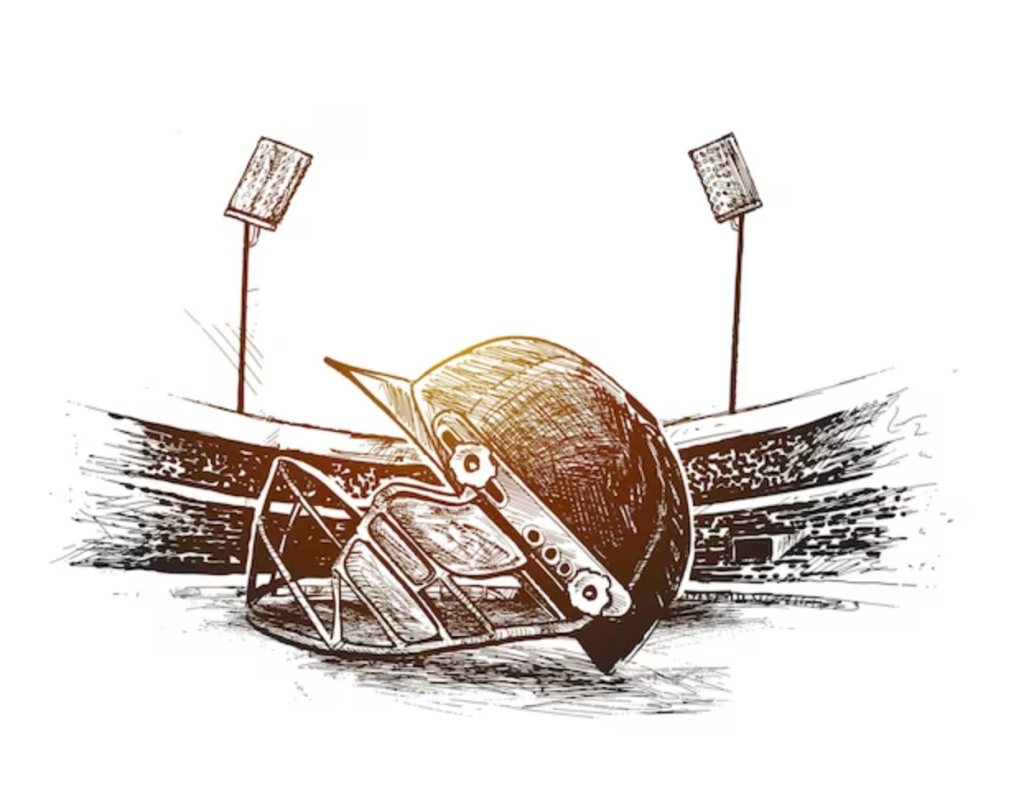Cricket, a sport that seamlessly blends athleticism and strategy, has gained immense popularity among the youth. As the game becomes more competitive, ensuring the safety of young players is paramount. Among the various protective gear, a Cricket Helmet is arguably the most crucial. This guide aims to provide parents, coaches, and young cricketers with insights into selecting the perfect youth cricket helmet to safeguard against potential injuries.

Understanding the Importance of a Cricket Helmet
Cricket involves high-speed deliveries, dynamic fielding, and intense batting, making it essential to prioritise safety. Head injuries can have severe consequences, and a well-fitted helmet is the first line of defense against potential trauma. Helmets not only shield the head from fast-paced deliveries but also protect the face and neck from accidental collisions and bouncers.
Compliance with Safety Standards
When choosing a youth cricket helmet, it’s crucial to prioritise those that comply with international safety standards. Look for helmets that meet the safety regulations set by cricket boards, such as the International Cricket Council (ICC) or other relevant governing bodies. Compliance ensures that the helmet has undergone rigorous testing and provides adequate protection.
Proper Sizing for Optimal Protection
A helmet that doesn’t fit well is as good as not wearing one at all. It’s essential to choose the right size to ensure optimal protection. Measure the circumference of the young player’s head, and refer to the manufacturer’s size chart to find the suitable helmet size. A well-fitted helmet should sit snugly on the head without causing discomfort or impeding vision.
Helmet Construction and Materials
The construction and materials of a cricket helmet play a significant role in its protective capabilities. Modern helmets, like Shrey Cricket Helmet, are typically made of a combination of high-quality materials, including a strong outer shell and an inner foam padding. The outer shell is usually made of reinforced fiberglass or carbon fiber, providing durability and impact resistance.
The inner padding, often made of expanded polystyrene (EPS) foam, absorbs and disperses impact energy, reducing the force transmitted to the head. Look for helmets with multiple layers of padding for enhanced shock absorption. Additionally, ventilation is essential to prevent overheating during extended periods of play.
Facial Protection
While the primary function of a cricket helmet is to protect the head, facial injuries are not uncommon in the sport. Helmets with a sturdy grille or faceguard offer additional protection to the face and jaw. Grilles made of high-quality materials like stainless steel or titanium provide strength and durability while ensuring visibility is not compromised.
Adjustable Features for Comfort
Comfort is key when it comes to a youth cricket helmet. Look for helmets with adjustable features, such as straps and chin guards, to ensure a secure and comfortable fit. A secure fit is crucial to prevent the helmet from shifting during play, maintaining consistent protection.
Brand Reputation and Reviews
Opting for helmets from reputable brands is a wise decision. Established brands invest in research and development to create helmets that meet the highest safety standards. Reading customer reviews and testimonials can provide valuable insights into the performance, durability, and comfort of a particular helmet model.
Budget Considerations
While safety should be the top priority, budget considerations are also important. However, compromising on the quality of a cricket helmet to save costs is never advisable. Look for helmets that strike a balance between affordability and safety features. Investing in a quality helmet is a small price to pay for the long-term well-being of young cricketers.
Regular Maintenance and Replacement
A cricket helmet undergoes wear and tear over time, especially with frequent use. Regularly inspect the helmet for any visible damage, such as cracks or deformities. Replace the helmet immediately if any issues are detected, as compromised protection can lead to severe injuries. Additionally, consider replacing the helmet every few years, even if it appears undamaged, to ensure it meets the latest safety standards.
Educating Young Cricketers
Finally, it’s crucial to educate young cricketers about the importance of wearing a helmet and wearing it correctly. Emphasise the potential risks of head injuries and the role a helmet plays in preventing them. Instill good habits from an early age, such as always wearing the helmet during practice sessions and matches.
Conclusion:
Choosing the perfect youth cricket helmet is a vital aspect of ensuring the safety and well-being of young cricketers. By prioritising compliance with safety standards, proper sizing, quality construction, and additional features like facial protection, parents, coaches, and players can make informed decisions. Remember, a well-fitted and high-quality helmet is not just protective gear; it’s a commitment to the long-term safety and enjoyment of the game. As cricket enthusiasts, let’s echo the sentiment: Safety first, game second!